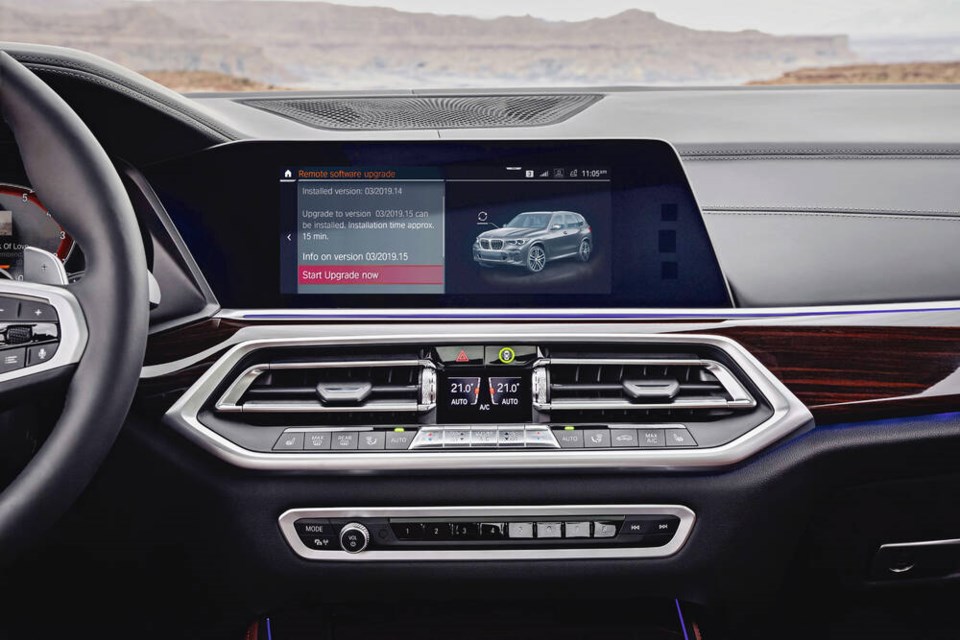I’m sure most drivers have been there. You’re crawling in a long line of traffic somewhere and find you’re stuck behind a slightly past its prime vehicle belching out noxious oil laced fumes like a Victorian iron mill.
For me it makes for an instant headache.
There was a time where you couldn’t get away with that in this province.
Once upon a time, there were vehicle inspection stations, where grizzled government mechanics did a head to toe over your car and decided if you could carry on for another year.
Sometimes it was just a matter of a warning to have your wiper blades replaced. But in worst case scenarios, you’d be hopping up beside a tow truck driver as he hauled you and your car home or to the garage.
The nauseating oil burner I was stuck behind the other day would never have made it through.
So what happened? Where did the inspection stations go?
Don, whose driving background hails from England, wrote in this week to ask the same question. His experience in the U.K. is that vehicles over three years old are tested for their emission levels and general roadworthiness every year.
While it’s intuitive to believe that mechanically unreliable cars are a major hazard on our roads, the statistics say otherwise.
In the U.S. several studies have shown that mechanical defects consistently account for just two per cent of all vehicle crashes. Ninety-four per cent of vehicle crashes are caused by driver error.
Some U.S. States actually experienced a drop in crashes after dispensing with their mechanical safety inspection programs.
An alarming side note also popped up when experts computed these numbers.
More crashes are now occurring as a result of “in vehicle” distractions from the use of technology.
Investigators discovered that smartphones, ipods and other electronic devices create way more danger than an unrepaired vehicle.
Wifi enabled vehicles, in particular, with their host of funky apps, have been identified for causing a surge in highway deaths since 2016.
Another reason for the inspection station’s demise is the improvement in vehicles’ overall mechanical reliability. Computers and robots now assemble cars with a precision Henry Ford could only dream about.
Electronic ignition and fuel injection in most modern cars often mean they don’t even require tune-ups for 100,000 kms or more.
Should drivers then be off the hook for maintaining their vehicles? Not at all.
Crashes from poorly maintained tires, defective brakes and neglected maintenance do happen.
There are nearly 50 regulatory schedules within B.C. motor vehicle act that spell things out precisely about how your vehicle needs to be equipped and maintained.
Everything from signal light flashing rates to the type of sound your horn can make is covered.
The fines for ignoring these problems can be severe, particularly in the case of commercial vehicles, which, of course, are way different. They are still inspected annually.
Like aircraft, semi trailer trucks are complex pieces of automotive machinery doing heavy duty work, often on challenging roadways. When things go wrong with a big rig, mayhem, even carnage, can happen.
Ultimately, while I definitely want those junky oil burners taken off the road, the main effort must keep focus on that 94% of the problem — poor and distracted drivers.
Glove Box — Summer is nearly with us, although judging by May’s weather, there is some doubt to that. But it’s still a good time to again remind drivers about the perils flaggers and road construction crews will face this year.
There will be an unprecedented amount of highway construction and road repair throughout the province this summer. Lots of patience is required.
According to WorkSafeBC, two roadside workers in the province were killed last year and another 31 were injured and forced to be off work after being struck by vehicles. In the last decade, 12 roadside workers were killed and another 221 missed work due to injury.
Keeping these people safe also requires drivers, more than ever, to obey the rules when crews in their vehicles are working along the roadside.
When they’re displaying red, blue or yellow flashing lights on the side of a highway, approaching drivers must slow down and move over — if it’s safe to make the move.
If the speed limit is 80 km/h or more you must slow to 70 km/h. If the speed limit is less than 80 km/h, you must slow to 40 km/h when passing these vehicles.
But if you’re into learning the hard way, the fine for ignoring this particular rule is $173 and three points.
Construction zone rules are even tougher. Speeding, for example, will set you back $483 compared to the going rate of $196 for a regular stretch of road.



